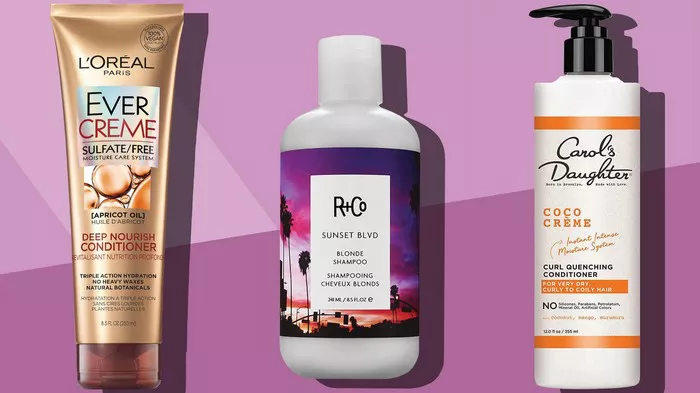In the realm of hair care, there’s a divisive question that can stir quite a commotion at dinner parties: how often should you wash your hair? While opinions on this matter vary greatly, the fact remains that there is no universal “right” or “wrong” approach to cleaning your scalp. Different hair types and individual needs lead to varied routines.
For Black women, the concept of “wash day” is often a fortnightly ritual, or even less frequent when their hair is in a protective style. On the flip side, some individuals wash their hair daily while in the shower. If you find yourself wishing you could extend the time between washes and explore a three-day hair washing schedule, you might have encountered the phenomenon known as ‘hair training’ on TikTok.
Understanding Hair Training
Hair training, also known as ‘scalp training’ or ‘oil training’ on TikTok, involves altering your hair-washing routine to prolong the intervals between each wash, with the aim of “training” your hair to produce less oil over time. The allure of hair training has surged in 2023, largely due to TikTok videos, with the hashtag #hairtraining amassing millions of views. It hinges on the idea that with practice, you can manipulate your hair into adhering to an ‘ideal’ wash schedule. But is there any scientific basis to this concept?
The Reality of Hair Training
The short answer is no, your hair cannot be “trained” like a puppy. Hair experts like trichologist Helen Reavey, the founder of the scalp-care line Act + Acre, advise against pursuing this method. Most videos touting the merits of hair training are, as Reavey puts it, leading viewers astray. The notion of building up your scalp’s tolerance to less frequent washes until it “adjusts” to a new schedule is largely unsubstantiated.
Reavey stresses that permitting oil, products, and environmental pollutants to accumulate on the scalp can be severely damaging to the scalp microbiome and the overall health of your hair. Furthermore, your scalp’s sebum production is closely linked to hormonal factors, and “training” your hair won’t influence these underlying hormone mechanisms.
However, there is some truth to the idea that you can achieve a balanced scalp microbiome, which can contribute to healthier hair and scalp. The key is not to starve your hair of necessary washes but rather to adopt a holistic approach to hair and scalp care.
Frequency of Hair Washing
The idea that daily hair washing is detrimental is a myth, according to most scalp experts who possess in-depth knowledge of hair health. Reavey herself is a daily hair washer and dismisses the notion that washing your hair too often is harmful. Much like washing your face, cleaning your scalp and hair is a normal part of maintaining hygiene.
Reavey emphasizes that oil on the scalp and hair is entirely normal, and there is no need to feel ashamed if you wash your hair daily. Ultimately, the frequency of hair washing should align with individual preferences and needs. Signs that it’s time to wash your hair include excessive oil, noticeable odor, itchiness, limp hair, or difficulty styling.
Strategies to Wash Your Hair Less
For those seeking to extend the time between washes, there are alternative approaches to explore. Some individuals endorse a nightly dry-brushing ritual, which involves brushing dry hair to redistribute oil from the scalp down the hair shaft. This method, as mentioned by Dianna Cohen, founder of Crown Affair, and a hair content creator, can significantly reduce the need for frequent washes.
Brushing and stimulating the scalp play a vital role in removing approximately 60 to 67% of sebum produced on the scalp. Trying scalp gua sha, a technique similar to facial gua sha, may also help in this regard.
Hair cycling is another strategy. This involves rotating your shampoos or using a clarifying shampoo or exfoliating scrub on wash days when you want exceptionally clean hair. These products help extend the time between washes by efficiently removing excess oil and build-up from the scalp.
Reavey supports hair cycling and recommends exfoliating treatments once a week to maintain a healthy scalp microbiome. Excessive washing can strip the scalp of good bacteria, which are essential for creating a conducive environment for hair growth. Additionally, it’s important to use lukewarm water while washing your hair, as extreme temperatures can cause issues such as dehydration and nutrient constriction.
Investing in precision dry haircuts can also contribute to extending the time between washes. Dry cuts can “de-bulk” the hair, making it feel lighter and reducing surface tension on the scalp.
The Place of Dry Shampoo
Dry shampoo, once a popular solution for extending time between washes, has fallen out of favor among scalp experts. Traditional aerosol dry shampoos can lead to scalp buildup, potentially blocking hair follicles and causing various scalp issues. Instead, experts recommend fine-ground powder innovations that incorporate plant-based ingredients like tapioca powder and rice starch, which gently absorb excess oil, odor, and sebum to refresh the hair without causing harm to the scalp.
In summary, while “hair training” may not be a scientifically sound concept, there are alternative methods and strategies to extend the time between hair washes without compromising hair and scalp health. Each individual should choose a hair care routine that aligns with their unique needs and preferences.


